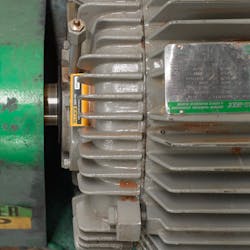Maintaining critical assets under normal conditions is complicated in even the best of circumstances. Add in a pandemic and increased demand for essential supplies and services and your entire maintenance plan could be in jeopardy. That is what some maintenance teams are facing today, and it isn’t pretty.
In a crisis, maintenance planning may inadvertently take a back seat to responsive maintenance—either because assets are functioning at higher-than-normal operations or because of a reduction in maintenance staff. Either way, assets need to operate reliably, and systems need to remain up and running.
A common practice used by strategists worldwide is a start, stop, and continue model of evaluating current practices against long or short-term goals. The strategy works well for maintenance planning during a crisis when flexibility and efficiency need to meet reliability and production goals. Here is how it could be applied to your maintenance planning during this pandemic.
START prioritizing assets
Start prioritizing your assets based on their criticality to your success. Consider the risks involved with the asset should it go down or reduce productivity. A few common ways of prioritizing assets include:
- Listing assets as either critical or not critical
- Ranking all assets from the most critical to least critical
For the most part, these are subjective approaches that rely on capacity and scheduling more than strategy.
A better way to prioritize your assets is to use a framework that involves understanding how each asset impacts your ability to meet your objectives. For municipal services, public facilities, non-profit organizations or other entities that don’t generate revenue, criticality may be based on the asset's ability to influence the fulfillment of the organization's mission, operating within budget or providing the expected level of service. For this example, we’ll use influence on production revenue.
Star Athletes: assets that directly determine the plant’s ability to win, and by how much. Beyond simple uptime and downtime, there is a direct relationship between each percentage of incremental performance and the incremental revenue of the company.
Critical: assets that must be up and running for the company to make money. Performance is less of an issue than whether the asset is on or off. If things are spinning, conveyors are moving, or hydraulics are actuating, the company can generate revenue.
Semi-critical: assets that, when they go down, don’t necessarily stop production—but they do put a strain on the system. Think of a rivet press that goes down—to keep up production volume, rivets may need to be manually driven in.
Non-critical: assets that do not affect the company’s ability to generate revenue—no matter how big, expensive, or complex they may be.
STOP putting efficiency above safety
Dangerous and hazardous conditions can put even the most experienced maintenance technicians in a safety quandary—especially when under pressure to complete more inspections in less time.
Safety should not be at the mercy of speed. Consider using windows for fast, efficient, and accurate inspections.
- Infrared windows are installed in panels to provide a faster and more comfortable inspection—full personal protective equipment is usually not required. Using the window to collect thermal data and images reduces the risk of arc-flash and electrocution, increases the safety of your technicians, and reduces the amount of time it takes to complete the inspection.
- Power quality windows are also installed in a panel. They include voltage and current connections that can be accessed without opening the panel door. A logger or analyzer can quickly connect for faster measurements.
CONTINUE monitoring systems
You should keep doing the things that are low effort with a high payoff. Consider the ease of monitoring and the confidence in knowing when issues are discovered—before they become a problem.
Condition Monitoring
Once installed and set up, condition monitoring equipment and software allow you to remotely observe equipment performance, discover electrical problems, assess how an asset is consuming power, and even if assets are on or off. From your phone or desktop, you can examine voltage, current, and frequency from electrical systems to detect mechanical problems or component wear in assets—especially important when assets are running at maximum capacity.
A crisis is not a time when you want to encounter power problems. Find patterns in energy consumption or monitor equipment wear by plotting power measurements over time.
Vibration Monitoring
Machine vibration is common, but when the vibration is in excess of what is expected, that could be a sign of an issue. Vibration monitoring devices use accelerometers to measure changes in amplitude, frequency, and intensity of forces that damage rotating equipment. Once installed, you can discover issues associated with imbalance, looseness, misalignment, or bearing wear in equipment before there is a catastrophic problem.
Vibration monitoring can detect premature wear in components, which can be even more accelerated when assets are pushing their limits. Catching premature wear early can help avoid premature failure and safety hazards.



